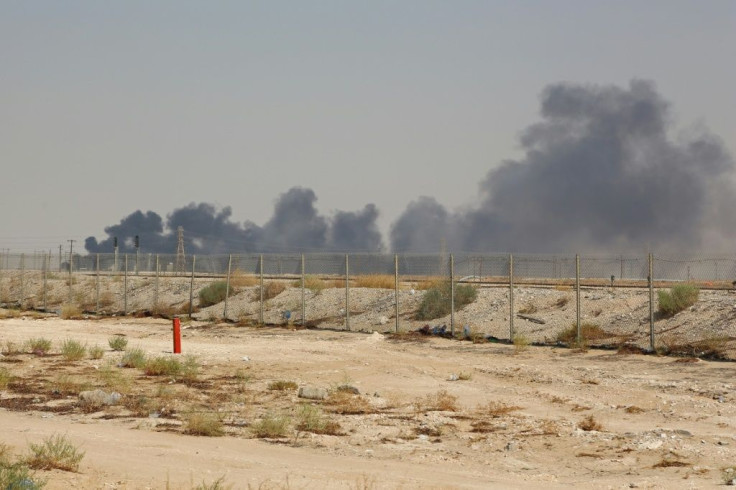Which Country Attacked Saudi Arabia? Yemen Rebels Claim Responsibility But US Says Iran More Likely

Drones that attacked a Saudi oil facility, destroying 5% of the world’s oil output, were not launched from Yemen as claimed by Houthi rebels, a Saudi military spokesman said Monday.
Col. Turki al-Malki said Iranian weapons were used.
The attack sent oil prices soaring Monday, with both Brent and crude futures more than 10% higher.
U.S. Secretary of State Mike Pompeo accused Iran of carrying out the strike in a tweet not backed by any evidence. Tehran denied the accusation.
“We assure the Saudi regime that our long hand can reach wherever we want, and whenever we want,” Houthi spokesman Yahya Saree said in a statement. He said the drones used in Saturday’s strikes had been modified but offered no proof the Houthis actually were responsible. U.S. and Saudi officials say the rebels are getting military and logistical support from Iran.
“We don’t need to provide evidence,” Mohammed Albukhaiti, another Houthi spokesman, told the Washington Post in a telephone interview.
President Donald Trump, who last week floated the idea of easing sanctions against Iran, said the U.S. is “locked and loaded,” ready to retaliate as soon as Saudi Arabia confirms Iran’s culpability.
Trump authorized the release of oil from the Strategic Petroleum Reserve if it’s needed to keep U.S. oil supplies stable and tweeted Monday he does not believe Iran’s denial.
Trump emphasized the U.S. is now a net oil exporter and the biggest energy-producer in the world.
“We don’t need Middle Eastern oil and gas, and in fact have very few tankers there [in the Middle East], but will help our allies,” Trump tweeted. China and European allies cautioned against any hasty action, with British Foreign Minister Dominic Raab saying the picture needs clarification and German Foreign Minister Heiko Mass telling a news conference Germany is still investigating. Russia warned against “jumping to conclusions” and China cautioned against naming a culprit “without conclusive facts.”
Bloomberg quoted two administration officials as saying cruise missiles may have been used in the attack on the Aramco crude-processing facility in Abqaiq and the Khurais oil field, which disrupted production of an estimated 5.7 million barrels of oil a day. A third administration official described the weapons as precision guided.
The administration released satellite photos of the damage, indicating the attackers approached from the north, not the south where Yemen is located.
Houthi rebels Monday threatened additional attacks on Saudi oil installations and warned foreigners to leave the area.
Iraq said the strike had not been launched from its territory and talked with Pompeo about it overnight. Kuwait said it was investigating whether a drone sighting over its territory was related to the attack.
The U.S. has blamed Iran for a series of attacks on commercial tankers in the Persian Gulf region and accused it of shooting down a U.S. drone over international waters. Trump also has extended an invitation to talk to Iranian Prime Minister Hassan Rouhani, but Iran said Monday there are no plans for the two to meet on the sidelines of the U.N. General Assembly later this month.
© Copyright IBTimes 2024. All rights reserved.






















